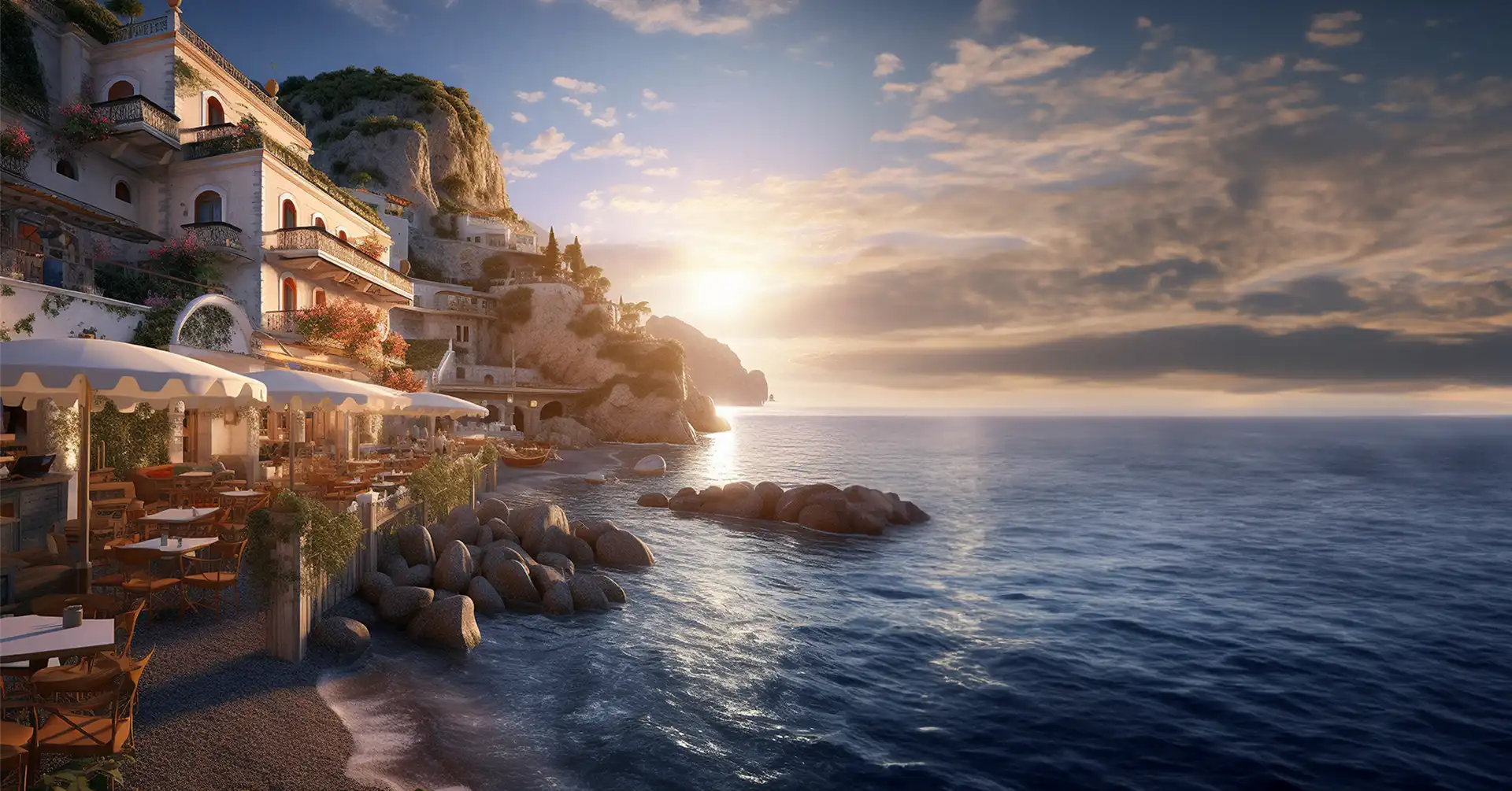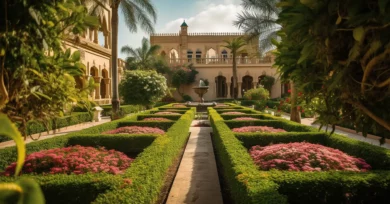Hello, my wonderful readers! Discover the captivating allure of Tunisia, a Mediterranean jewel that seamlessly blends Arab traditions with a rich tapestry of history and culture. In this immersive exploration, we embark on a journey to unravel the secrets and beauty that make Tunisia a unique gem in the Arab world.
Nestled along the Mediterranean coastline, Tunisia beckons with its stunning landscapes, from the azure waters of the Mediterranean Sea to the golden sands of its pristine beaches. Beyond its picturesque exterior, Tunisia boasts a deep-rooted history that has shaped its identity over centuries. From Carthage’s ancient ruins to the medinas’ intricate architecture, every corner of this North African nation tells a story of resilience and evolution.
Our deep dive into Tunisia extends beyond its historical landmarks; we delve into the vibrant tapestry of its culture. Immerse yourself in the lively souks, where the aromas of spices mingle with the vibrant colors of handmade crafts. Explore the traditional music and dance that echo the rhythms of Tunisia’s diverse communities.
Join us on this exploration of Tunisia, where the meeting of the Mediterranean and Arab worlds creates a tapestry of experiences waiting to be unraveled. Let’s uncover the hidden treasures and timeless charm that define Tunisia as a true Mediterranean jewel of the Arab world.
The History of Tunisia | Mediterranean Jewel
Tunisia’s history is a captivating narrative of resilience, conquests, and cultural amalgamation. The roots of this North African nation stretch deep into antiquity, with the legendary city of Carthage serving as a cradle of civilization. Founded by Phoenician settlers in the 9th century BCE, Carthage grew into a formidable maritime power, engaging in epic struggles with Rome during the Punic Wars.
The Roman era witnessed Tunisia’s integration into the vast empire, bringing prosperity and architectural marvels such as the impressive amphitheater of El Djem. As Rome declined, the Vandals, Byzantines, and Arabs successively left their imprints on the region. The Arab-Muslim conquest in the 7th century introduced Islam, shaping Tunisia’s cultural and religious landscape.
During the medieval period, Tunisia flourished under the Fatimids and then the powerful Zirid and Hafsid dynasties. Kairouan became a center of Islamic learning and culture, while trade routes enriched the coastal cities.
European powers sought dominance during the Renaissance, with the Ottoman Empire establishing control. Tunisia’s strategic location made it a coveted prize, leading to conflicts with the Spanish, Ottoman, and Italian forces.
In the 19th century, Tunisia faced challenges from European colonial powers, and it ultimately became a French protectorate in 1881. The struggle for independence gained momentum in the mid-20th century, culminating in establishment of the Republic of Tunisia 1956 under Habib Bourguiba.
Modern Tunisia has become a beacon of stability and progress in the region. Its history, marked by a mosaic of civilizations, reflects the resilience and adaptability of its people, making it a fascinating study of cultural evolution and historical transformation.
Why is Tunisia known as the Mediterranean Jewel of Arabs?
Tunisia, often hailed as the Mediterranean Jewel of the Arab world earns this prestigious title through geographical splendor, cultural richness, and historical significance.
The country’s coastal stretch along the Mediterranean Sea is a visual spectacle, adorned with pristine beaches, azure waters, and a mild climate. This natural beauty positions Tunisia as a true gem among Arab nations, offering a picturesque landscape that seamlessly merges with the captivating charm of the Mediterranean.
The historical narrative of Tunisia adds another layer to its epithet. The ancient Carthage’s illustrious past as a Phoenician settlement and later a formidable Roman city anchors Tunisia’s historical significance. The ruins of Carthage stand as a testament to the country’s role as a crucible of ancient civilizations, contributing to its reputation as a jewel in the Arab world.
Culturally, Tunisia showcases a unique blend of Arab, Berber, and Mediterranean influences. The medinas reflect the nation’s rich heritage with their labyrinthine alleys and vibrant souks. Traditional music, art, and cuisine further exemplify the fusion of Arab and Mediterranean elements, creating a cultural mosaic that distinguishes Tunisia on the global stage.
Tunisia’s strategic location has historically made it a crossroads of civilizations, contributing to its diverse identity. The intersection of Arab and Mediterranean worlds in Tunisia results in a harmonious coexistence of traditions, languages, and lifestyles.
In summary, Tunisia’s recognition as the Mediterranean Jewel of the Arab world is rooted in its breathtaking geography, historical significance, and the harmonious synthesis of Arab and Mediterranean cultures. This small North African nation is a testament to the beauty that emerges when nature, history, and culture converge in splendid harmony.
The Food of Tunisia
Tunisian cuisine, a tantalizing symphony of flavors and aromas, takes center stage in the culinary world with its rich history and diverse influences. From the bustling markets to the family tables, the food of Tunisia is a vibrant celebration of local ingredients and cultural fusion.
At the heart of Tunisian cuisine is the iconic dish, couscous. Steamed to perfection and often accompanied by savory stews, couscous reflects the influence of Berber traditions. The aromatic blend of spices, including coriander, cumin, and caraway, imparts a distinctive flavor that characterizes many Tunisian dishes.
Harissa, a fiery chili paste, is the fiery soul of Tunisian cuisine. Made from sun-dried chili peppers, garlic, and spices, it adds a bold kick to dishes, showcasing the country’s love for robust flavors. Whether smeared on bread or incorporated into stews, Harissa is a culinary emblem of Tunisia.
Seafood takes prominence along the Mediterranean coast, offering a fresh and delectable array of dishes. Grilled fish, calamari, and seafood couscous showcase the influence of the Mediterranean Sea on Tunisia’s gastronomic landscape.
Street Foods
Street food markets, or “souks,” brim with irresistible delights. Brik, a thin pastry filled with egg, tuna, and capers, is a popular quick and flavorful snack choice. Similarly, Mechouia, a salad made with grilled peppers, tomatoes, and onions, captures the essence of Tunisian freshness.
Tunisian sweets are a delightful finale to any meal. Makroud, a deep-fried semolina pastry stuffed with dates and nuts, and Baklava, a layered pastry with honey and nuts, offer a sweet contrast to the savory main courses.
The communal aspect of Tunisian dining is evident in the tradition of sharing meals with family and friends. The hospitality and warmth extended through food encapsulate the essence of Tunisian culture, making every meal a celebration of heritage and flavor.
The food of Tunisia is a culinary odyssey, blending diverse influences to create a tapestry of flavors that reflect the country’s history and cultural richness. Tunisia’s gastronomy is a testament to the nation’s vibrant and dynamic culinary identity, from the spice-infused couscous to the fiery Harissa and fresh seafood.
Tourist Spots of Tunisia | Mediterranean Jewel
Tunisia, a North African gem, beckons travelers with a kaleidoscope of enchanting tourist spots that weave together history, culture, and natural beauty. Embark on a journey through this captivating nation, where each destination tells a unique story and leaves an indelible mark on the visitor.
Carthage: Ancient Marvels Unearthed
Explore the ancient ruins of Carthage, a UNESCO World Heritage site that is a testament to the city’s grandeur in antiquity. Wander through the remnants of amphitheaters, bathhouses, and the iconic Byrsa Hill, where the Punic civilization once thrived.
The Medina of Tunis: A Tapestry of Tradition
Immerse yourself in the heart of Tunis, where the Medina unfolds as a labyrinth of narrow alleys, bustling souks, and historic landmarks. The Great Mosque of Zaytouna, towering minarets, and the Dar Ben Abdallah Museum offer glimpses into Tunisia’s rich cultural heritage.
Hammamet: Tranquil Beach Retreat
Unwind on the shores of Hammamet, known for its pristine beaches and azure waters. The medina of Hammamet exudes a charming ambiance, and the ancient Kasbah overlooks the sea, providing a picturesque backdrop to this coastal haven.
Dougga: Roman Ruins in the Hills
Venture into the hills to discover Dougga, an exceptionally well-preserved Roman city. Marvel at the majestic Capitol, the Roman theater, and the Temple of Juno, all set against a panoramic backdrop of the Tunisian countryside.
Kairouan: Islamic Heritage Unveiled
Delve into the Islamic heritage of Tunisia in Kairouan, home to the Great Mosque of Kairouan, one of the oldest and most significant mosques in North Africa. The city’s medina, with its ancient gates and vibrant markets, offers a glimpse into traditional Tunisian life.
Chott el Jerid: Salt Flats and Desert Landscape
Experience the surreal beauty of Chott el Jerid, a vast salt flat that shimmers in the sunlight. The barren yet captivating landscape is surrounded by the undulating dunes of the Sahara Desert, creating a mesmerizing contrast.
Matmata: Underground Troglodyte Dwellings
Journey to Matmata to explore the unique troglodyte dwellings carved into the desert hills. These subterranean homes provide a fascinating glimpse into traditional Berber architecture and a captivating setting for sci-fi enthusiasts, as seen in Star Wars.
Tunisia’s tourist spots are a testament to the country’s diverse cultural heritage and natural wonders. From ancient ruins to tranquil beaches, each destination offers a distinct experience, making Tunisia a compelling and multifaceted travel destination.
Conclusion
Our deep dive into Tunisia, the Mediterranean Jewel of the Arab world, reveals a tapestry of enchanting experiences that blend seamlessly to form the unique identity of this North African gem. From Carthage’s ancient echoes to the Tunisian medinas’ vibrant hues, every corner of this captivating nation exudes a rich history and cultural fusion.
The allure of Tunisia lies not only in its breathtaking landscapes along the Mediterranean coast but also in the warmth of its people and the harmonious coexistence of diverse influences. The tantalizing flavors of Tunisian cuisine, the architectural marvels of Kairouan, and the tranquil retreats of Hammamet all contribute to the country’s multifaceted charm.
As we navigate through the labyrinthine streets of Tunis and stand amidst the ruins that whisper tales of ancient civilizations, it becomes evident that Tunisia is not merely a destination but a journey through time. The resilience of its people and the seamless blend of Arab, Berber, and Mediterranean cultures create a narrative that transcends borders and captivates the hearts of those who explore its wonders.
With its rich tapestry of history, culture, and natural beauty, Tunisia stands as a testament to the enduring spirit of a nation that has embraced its past while gracefully evolving into a modern Mediterranean jewel. This deep dive into Tunisia leaves an indelible imprint, inviting travelers to uncover the hidden treasures and timeless allure that make it a truly extraordinary destination in the Arab world.
Also Read:
Saudi Arabia is Preserving It’s Traditions in a Modern World!
North African Culture: The Variety of Richness and Inclusivity!






